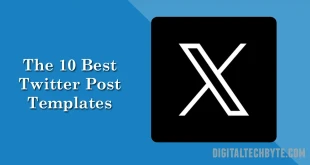In 2025, optimizing SEO title tags remains a crucial strategy to enhance search engine rankings and boost click-through rates. The article emphasizes placing the primary keyword within the first 40 characters of the title and keeping the overall length between 50-60 characters to avoid truncation on search results pages. Titles should align closely with page content and user intent to prevent Google from rewriting them, which happens frequently in 2025.
Emotional and action-driven words are recommended to engage users and increase CTR. Including the current year (2025) signals freshness and builds relevance for trending searches. Best practices also involve aligning title tags semantically with H1 headers, using subtle brand mentions, and leveraging headline testing tools for continuous optimization.
The guide highlights that Google’s AI models now interpret title relevance more contextually, making natural keyword usage and clear, concise phrasing essential. Regular audits and updates to title tags are encouraged to keep pace with evolving search behavior and algorithm changes, ultimately ensuring higher visibility and user engagement in search engine results.
Here is a detailed summary of 2025 SEO Title Tag optimization best practices based on the latest authoritative sources:
2025 SEO Title Tag Optimization Best Practices
- Keyword Placement Early
Place your primary keyword within the first 40 characters of the title tag. This helps search engines recognize the focus of your page immediately and improves ranking signals. - Length Guidelines
Keep title tags between 50-60 characters (maximum 580 pixels) to avoid truncation in search engine results pages (SERPs). Concise titles maintain clarity and visibility. - Match Search Intent and Content
Ensure the title accurately reflects the page content and aligns with user intent. Titles that mislead or don’t match on-page content are often rewritten by Google. - Avoid Keyword Stuffing
Use one primary keyword per title. Overstuffing with multiple keywords reduces readability and may trigger penalties. Focus on natural, meaningful phrasing. - Use Emotional & Cognitive Triggers
Incorporate words that evoke curiosity, urgency, or authority—such as “Best,” “Guide,” or “How-To”—to encourage clicks and engagement. - Include Year (2025) for Freshness
Adding the year reflects updated information, which appeals to users seeking the latest guidance and supports fresh content signals. - Align Title with H1 and On-Page Elements
Semantic alignment between title tags, H1 headers, and body content aids consistency and reduces chances of title rewriting by Google. - Subtle Brand Inclusion
Adding a well-known brand name at the end of the title tag can boost credibility but avoid placing it upfront or overusing it if irrelevant. - Utilize Tools for Testing & Optimization
Use headline analyzers, SERP preview tools, and A/B testing to refine titles for maximum click-through rates and optimal display. - Regular Title Audits
Periodically review and update title tags to stay relevant with trends, ranking shifts, and changes in search behavior.
An example of a strong optimized title in 2025:
“2025 SEO Title Tag Optimization: Boost Rankings with Proven Best Practices”
Following these guidelines helps your page rank higher and attract clicks in 2025 search environments.
 Digital Tech Byte Latest Technology News
Digital Tech Byte Latest Technology News





